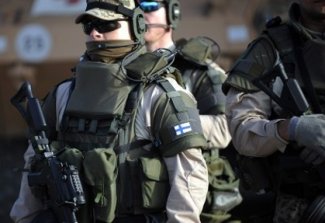Course correction in the Finnish army: investments in combat readiness and reserves

On 14 August, the Finnish Defence Ministry began implementing the recommendations of the government’s Defence Report which the parliament adopted in June. The report, which was drawn up in cooperation with the Finnish Defence Command, is a strategic planning document covering the next ten years. Its recommendations include an increase in the wartime strength of the Finnish armed forces, from 230,000 to 280,000 soldiers; the assignment of some conscripts to the rapid manning of units in the event of a crisis or conflict (their service will be extended from 6 to 12 months); and raising the army’s combat readiness level, to which an additional €55 million euros will be allotted annually from 2018. In addition, as of 2021 expenditure on the purchase of new armament and military equipment will rise by an extra €150 million annually. Finland is planning two major armament programmes in the period from 2019 to 2031; it wants to acquire four multi-role vessels (at an estimated cost of €1.2 billion) and multi-role fighters as successors to the F-18 Hornet (at an estimated cost of €7-10 billion).
These changes represent a correction to the previous large-scale reforms of the armed forces which were carried out in 2013-14. At that time, the search for budgetary savings led to the cuts to the wartime strength from 350,000 to 230,000 soldiers; to the number of professional and civilian personnel from 15,000 to 12,000; and to the total number of structures in the armed forces from 51 to 32 (by merging units, centralising logistics, and eliminating one level of command, among other measures).
The defence model of non-aligned Finland is based on general conscription and a huge trained reserve. The most important branch of the armed forces is the army itself, which in peacetime numbers 3500 professional soldiers and around 14,000 conscripts. After mobilisation, these forces are divided into manoeuvrable troops (35,000), which are the main strike force of the army; regional troops (125,000), that is, territorial defence, tasked with slowing down the enemy; and local forces (5000), which are assigned to defend military sites, critical infrastructure and support to the authorities.
Commentary
- Since Russia’s annexation of Crimea, Finland has ceased defence expenditures from its programme of budgetary savings, and has intensified its efforts to reinforce its defence capabilities. However, the time required to mobilise reservists and the focus of the small professional component on training conscripts mean that the Finnish land forces’ rapid-response capabilities are now limited to one company of special forces (the air force and navy stand at a higher level of combat readiness). Therefore, in 2015 and 2016 Finland undertook measures to accelerate the mobilisation process and raise the combat readiness level of its land forces. These included an update of the database of all available reservists (900,000), expanding the scale of the refresher exercises for reservists to improve their individual skills and tactics (from 5000 to 18,000 reservists annually), and making possible the call-up of 25,000 reservists for exercises without the three months’ notice that had hitherto been required. This policy includes a decision to extend compulsory military service from 6 to 12 months for some conscripts who will remain in their units.
- The increase in the target number of wartime strength, from 230,000 to 280,000, will mainly reinforce the regional troops (territorial defence). In part, however, this figure will be reached by including conscripts and border guards, who have previously not been counted, into the wartime forces. But increasing the wartime strength will not solve the problem of the insufficient number of professional soldiers (8000 in all branches of the armed forces). It also calls into question the ability to provide mobilised reservists with a sufficient armament and military equipment during wartime.
- Finland sees Russia as the biggest threat to its sovereignty, and is developing its military capabilities to repel conventional aggression. Finland (which has 5.5 million inhabitants, and is the 13th biggest economy in the EU) has considerable armoured, artillery and airpower potential, and has also developed a doctrine of ‘total defence’, that is, the involvement of all the state’s structures and citizens in the war effort. However, economic difficulties and the stagnant defence budget have limited the development of Finland’s defence capabilities. In recent years, military spending has run at around €2.8 billion, or 1.3% of GDP. However, the government is planning that defence spending will rise to 2% of GDP in the 2020s, when Finland intends to purchase multi-role vessels and new fighter jets, although these declarations should be treated with caution, as previous announcements of increases in defence spending were not implemented.
- Finland’s strategy towards Russia lies in a combination of military deterrence with a desire to maintain good political and economic relations with Moscow, in order to reduce the risk of tensions in bilateral relations. Finland wants to play a role as a pragmatic expert in Russian affairs, and an intermediary between the West and Moscow. The presidents and prime ministers of Russia and Finland hold regular telephone conversations and bilateral meetings (the last meeting between the presidents took place in July, on the occasion of the centenary of Finnish independence). Cooperation also takes place at the ministerial level, with the exception of the defence ministries (suspended after the annexation of Crimea). In addition, Finland is developing economic relations with Russia in areas not covered by sanctions (with energy playing the most important role). Helsinki strives to balance good relations with Russia with its ever broader military cooperation with Sweden and the United States.



